10 Herbal Teas For Hot Flashes
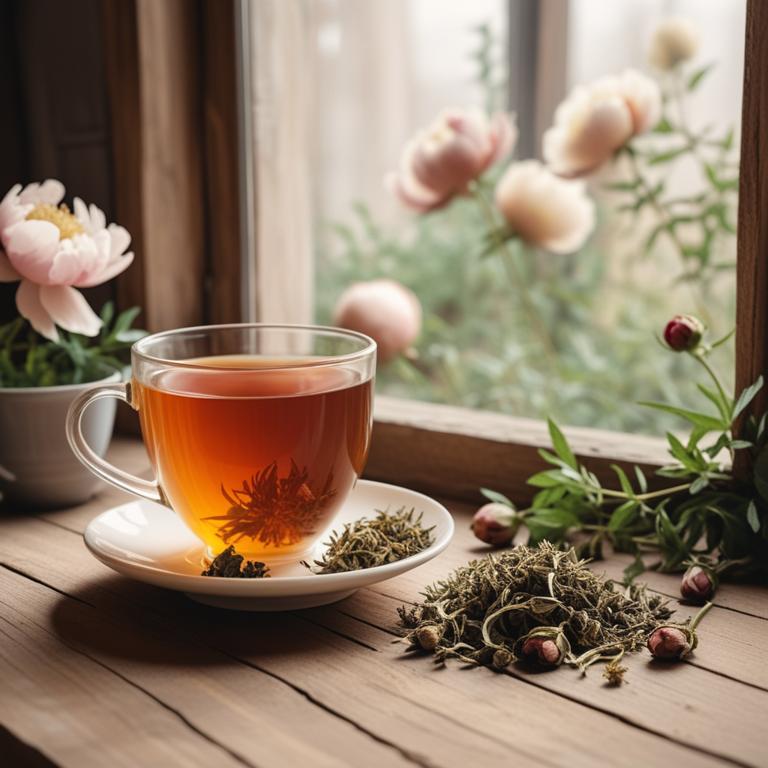
Herbal teas can be a natural way to help manage hot flashes.
These teas work by soothing the nervous system and balancing hormones, which can help reduce the severity and frequency of hot flashes. One example is Cimicifuga racemosa, also known as black cohosh, which has been shown to have a positive effect on hormonal balance and can help alleviate hot flashes. Another herb, Valeriana officinalis or valerian root, can help calm the nervous system and promote relaxation, which can be especially helpful for women experiencing hot flashes at night. Additionally, ginger, or Zingiber officinale, has anti-inflammatory properties that can help reduce hot flashes by improving blood flow and circulation.
Herbal teas can bring several benefits to your life. They can be a gentle and natural way to manage hot flashes without the side effects of prescription medications. They can also be a calming and relaxing way to unwind, especially after a long day. Drinking herbal teas can become a soothing and enjoyable part of your daily routine, helping you to feel more balanced and in control.
By incorporating herbal teas into your life, you can find a sense of relief from hot flashes and a greater sense of overall well-being.
- 1. Cimicifuga racemosa
- 2. Valeriana officinalis
- 3. Zingiber officinale
- 4. Lavandula angustifolia
- 5. Passiflora incarnata
- 6. Angelica sinensis
- 7. Glycyrrhiza glabra
- 8. Ginkgo biloba
- 9. Avena sativa
- 10. Paeonia lactiflora
1. Cimicifuga racemosa
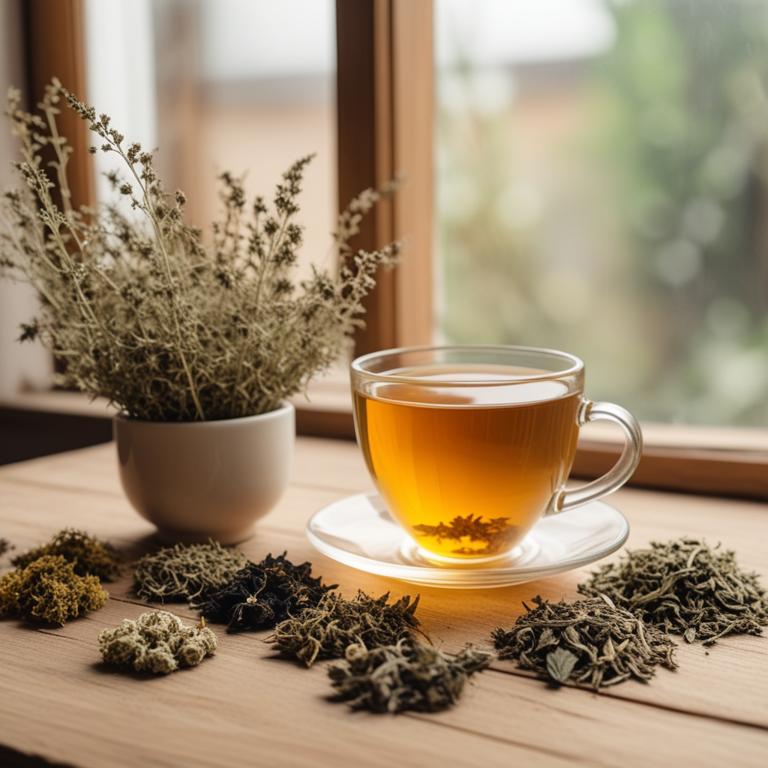
Cimicifuga racemosa teas contains a group of active constituents, including triterpene glycosides and phenolic compounds, that are known to have a positive effect on hot flashes.
The main triterpene glycoside, actein, has been shown to interact with neurotransmitters in the brain, such as serotonin and dopamine, which helps to regulate body temperature and reduce the severity of hot flashes. Additionally, the phenolic compounds in Cimicifuga racemosa teas have antioxidant properties that can help to protect the body from oxidative stress, which may contribute to hot flashes. The anti-inflammatory properties of Cimicifuga racemosa teas may also help to reduce the frequency and severity of hot flashes.
The combination of these properties makes Cimicifuga racemosa teas a potential natural remedy for hot flashes.
- Gather 1 cup of boiling water and 1 teaspoon of dried Cimicifuga racemosa root.
- Steep the root in the boiling water for 5-7 minutes. You can use a tea infuser or a small piece of cheesecloth.
- Strain the tea into a cup. Discard the root and any solids.
- Add honey or lemon to taste, if desired. You can also add ice for a refreshing cold tea.
- Drink the tea 2-3 times a day, as needed, to help manage hot flashes.
2. Valeriana officinalis
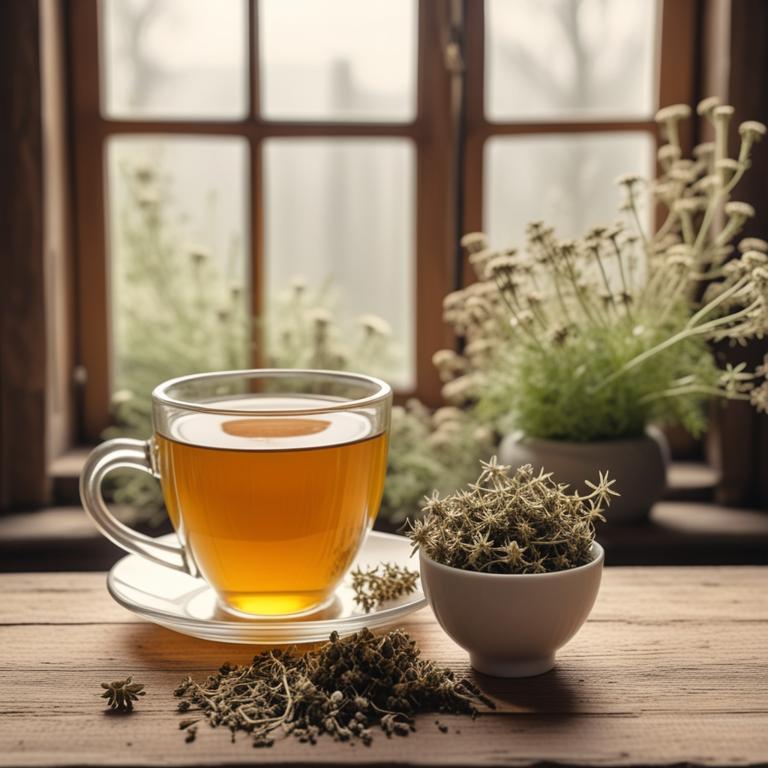
Valeriana officinalis teas contains valerenic acid and isovaleric acid as its bioactive constituents.
These compounds help to regulate body temperature and calm the nervous system, which are key factors in reducing the frequency and severity of hot flashes. Valerian root has a sedative effect on the body, which can help to alleviate the symptoms of hot flashes by promoting relaxation and reducing stress. The antispasmodic properties of Valeriana officinalis also help to ease muscle tension, which can contribute to hot flashes.
By promoting a calm and relaxed state, Valeriana officinalis teas can help to alleviate the discomfort associated with hot flashes.
- Gather 1 teaspoon of dried Valeriana officinalis root and 1 cup of boiling water.
- Measure 1 tablespoon of honey (optional) and set aside.
- Steep the dried root in the boiling water for 5-7 minutes.
- Strain the liquid and discard the root. Add the measured honey (if using).
- Drink the tea immediately, ideally when a hot flash occurs or is expected.
3. Zingiber officinale

Zingiber officinale teas contains the bioactive constituents gingerols and shogaols, which have anti-inflammatory properties.
These compounds help to relax the blood vessels and reduce blood flow to the skin, alleviating hot flashes. The warming properties of ginger also help to increase circulation and balance body temperature. Additionally, ginger has a natural sedative effect, which can help to calm the nervous system and reduce stress-related hot flashes.
By reducing inflammation and promoting relaxation, Zingiber officinale teas can provide relief from hot flashes.
- Get 1 tablespoon of dried Zingiber officinale root and 1 cup of boiling water.
- Put the Zingiber officinale root in a tea infuser or a heat-resistant cup.
- Pour the boiling water over the Zingiber officinale root.
- Let it steep for 5-7 minutes, then strain the tea.
- Drink the tea 2-3 times a day as needed for hot flash relief.
Zingiber Officinale Tea on Amazon
FGO Organic Ginger Tea, 100 Count, Eco-Conscious Tea Bags, Caffeine Free, Packaging May Vary (Pack of 1)
Disclaimer: We earn a commission if you click this link and make a purchase at no additional cost to you.
4. Lavandula angustifolia

Lavandula angustifolia teas contains the bioactive constituents linalool and linalyl acetate.
These compounds have a sedative effect on the nervous system, which can help reduce the frequency and severity of hot flashes. Linalool and linalyl acetate also have a cooling effect on the body, which can help alleviate the heat and discomfort associated with hot flashes. Additionally, the antioxidant properties of these compounds can help protect against cell damage and inflammation, which may contribute to the development of hot flashes.
By reducing stress and promoting relaxation, Lavandula angustifolia teas can help alleviate the symptoms of hot flashes and improve overall well-being.
- Gather 1 tablespoon of dried Lavandula angustifolia flowers, 1 cup of boiling water, and a tea infuser or strainer.
- Place the dried flowers in the tea infuser or strainer.
- Pour 1 cup of boiling water over the flowers and let it steep for 5-7 minutes.
- Strain the tea into a cup and discard the flowers.
- Drink the tea hot, 2-3 times a day, to help manage hot flashes.
5. Passiflora incarnata
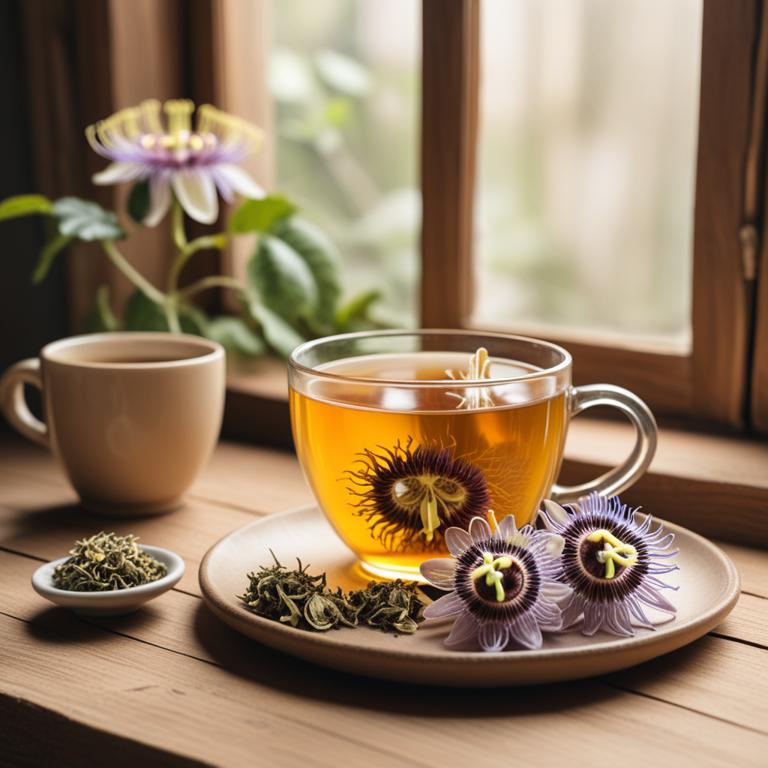
Passiflora incarnata teas contains bioactive constituents like flavonoids, alkaloids, and glycosides that have been shown to help alleviate hot flashes.
The flavonoids, particularly flavonoids like kaempferol and quercetin, have antioxidant properties that can help reduce inflammation and regulate body temperature. The alkaloids, such as passiflorine, also have a sedative effect that can help calm the nervous system and reduce symptoms of hot flashes. Additionally, the glycosides in Passiflora incarnata teas can help regulate hormonal imbalances, which is often a contributing factor to hot flashes.
By reducing inflammation, regulating body temperature, and balancing hormones, Passiflora incarnata teas may help alleviate hot flashes.
- Gather 1 cup of fresh or dried Passiflora incarnata flowers.
- Measure 1/2 cup of boiling water and pour it over the flowers.
- Let the mixture steep for 5-7 minutes, then strain it.
- Add 1 tablespoon of honey or sweetener (optional) to the tea.
- Drink 1 cup of the tea, 2-3 times a day, as needed.
6. Angelica sinensis
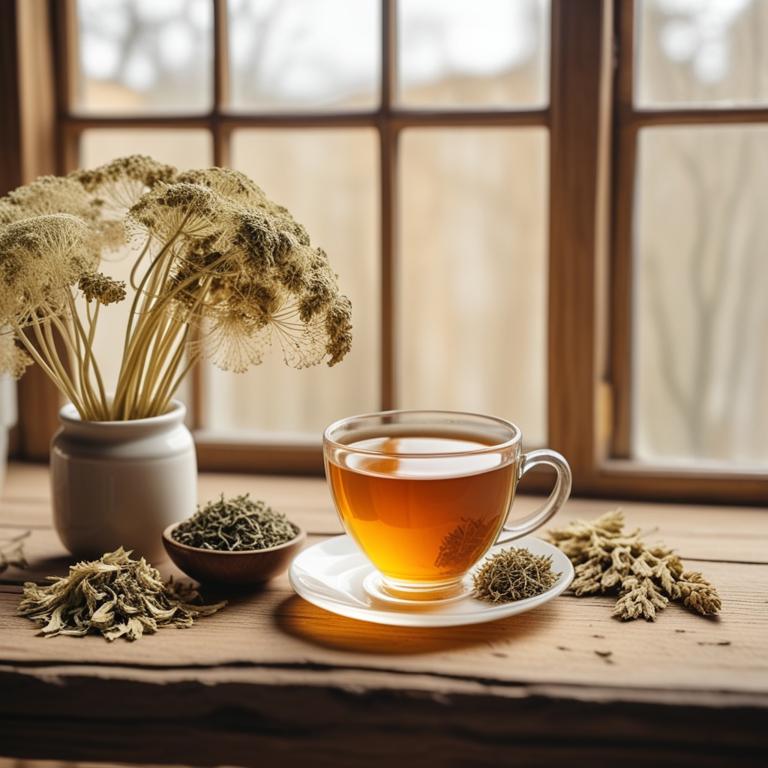
Angelica sinensis teas contains bioactive constituents like ferulic acid, isorhapontigenin, and ligustilide.
These compounds have anti-inflammatory and antioxidant properties, which help reduce the severity of hot flashes. Ferulic acid, in particular, has been shown to block the production of prostaglandins, hormone-like substances that can trigger hot flashes. Isorhapontigenin has been found to inhibit the activity of certain enzymes that contribute to hot flash symptoms.
By reducing inflammation and modulating hormone activity, the bioactive compounds in Angelica sinensis teas may help alleviate hot flash symptoms.
- Gather 2 tablespoons of dried Angelica sinensis root, a tea infuser or strainer, and a cup.
- Measure 1 cup of boiling water and pour it over the Angelica sinensis root in the tea infuser or strainer.
- Let the mixture steep for 5-7 minutes, then carefully lift the infuser or strainer out of the cup.
- Strain the tea into another cup to remove the Angelica sinensis root, if using a strainer.
- Drink the Angelica sinensis tea immediately, ideally when you start experiencing a hot flash.
7. Glycyrrhiza glabra

Glycyrrhiza glabra teas contains active constituents such as glycyrrhizin, flavonoids, and triterpenes.
These compounds have anti-inflammatory properties, which may help to reduce the frequency and severity of hot flashes. Glycyrrhizin, a key component of the tea, has been shown to have a regulating effect on the body's hormone balance, which can help alleviate hot flash symptoms. Flavonoids and triterpenes in the tea have antioxidant properties, which can help to protect the body from oxidative stress and inflammation that may contribute to hot flashes.
By reducing inflammation and promoting hormone balance, Glycyrrhiza glabra teas may provide relief from hot flashes.
- Gather 1 cup of water and 1 teaspoon of dried Glycyrrhiza glabra root.
- Heat the water in a pot until it boils.
- Add the dried root to the boiling water and reduce heat to low.
- Steep the mixture for 5-7 minutes, then strain the liquid into a cup.
- Drink 1-2 cups of the tea, 2-3 times a day, to help manage hot flashes.
8. Ginkgo biloba

Ginkgo biloba teas contains flavonoids and terpenoids, which are active constituents that have been shown to help alleviate hot flashes.
Flavonoids, specifically quercetin and kaempferol, have anti-inflammatory properties that can help reduce the frequency and severity of hot flashes. Terpenoids, such as ginkgolides and bilobalide, have antioxidant properties that can help stabilize blood vessels and improve blood flow, which can contribute to a reduction in hot flashes. The flavonoids and terpenoids in Ginkgo biloba teas may also help regulate hormones and reduce the production of certain neurotransmitters that can trigger hot flashes.
By reducing inflammation, stabilizing blood vessels, and regulating hormones, Ginkgo biloba teas may provide relief for women experiencing hot flashes.
- Gather 1 cup of boiling water and 1 teaspoon of dried Ginkgo biloba leaves.
- Measure 1 tablespoon of dried Ginkgo biloba leaves and add them to a tea infuser.
- Steep the Ginkgo biloba leaves in the boiling water for 5-7 minutes.
- Strain the tea and discard the Ginkgo biloba leaves.
- Drink 1 cup of the Ginkgo biloba tea 2-3 times a day to help with hot flashes.
9. Avena sativa
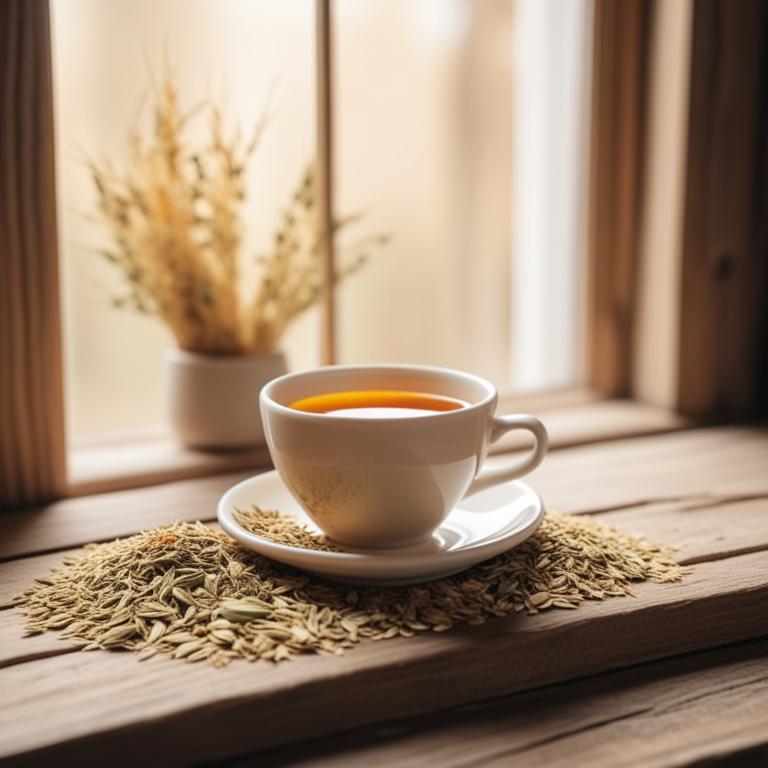
Avena sativa teas contains bioactive constituents such as avenacoside and avenanthramides.
These compounds have anti-inflammatory and antioxidant properties, which can help reduce the frequency and severity of hot flashes. Avena sativa teas also contains isovitexin, a flavonoid that has been shown to have estrogen-like effects, which can help alleviate hot flash symptoms. The sedative properties of avenacoside can also help promote relaxation and reduce stress, which can contribute to hot flashes.
Drinking Avena sativa tea may provide relief from hot flashes due to its combination of anti-inflammatory, antioxidant, and estrogen-like effects.
- Gather 1 cup of dried Avena sativa, a teaspoon of dried peppermint, and a cup of boiling water.
- Measure 1/2 teaspoon of dried Avena sativa and add it to a tea infuser or a heat-resistant cup.
- Pour 1 cup of boiling water over the Avena sativa and let it steep for 5-7 minutes.
- Strain the tea and add a teaspoon of dried peppermint if desired. Let it steep for another minute.
- Drink 1 cup of the tea 2-3 times a day to help alleviate hot flashes.
10. Paeonia lactiflora

Paeonia lactiflora teas contains a compound called paeoniflorin, which is a glycoside that has anti-inflammatory properties.
Paeoniflorin helps to regulate hormonal balance, which is often disrupted during hot flashes. The tea also contains other active compounds like benzyl butyrate and beta-sitosterol, which have been shown to have a calming effect on the body. Paeonia lactiflora teas has been used in traditional Chinese medicine for centuries to alleviate symptoms of menopause, including hot flashes.
By regulating hormonal balance and reducing inflammation, Paeonia lactiflora teas can help to alleviate hot flashes and improve overall well-being.
- Gather 1 cup of dried Paeonia lactiflora root and 2 cups of water.
- Boil the water in a pot and add 1 tablespoon of dried Paeonia lactiflora root.
- Steep the tea for 5-7 minutes, then strain it.
- Add honey or sugar to taste, if needed. Drink 1-2 cups of tea per day.
- Consult with a healthcare professional before using Paeonia lactiflora tea for hot flashes, especially if you have any medical conditions or take medications.